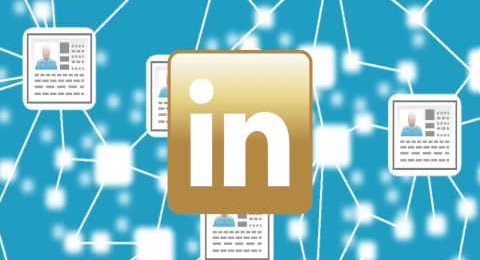The perfect survey invitation email from LinkedIn
Research or Consumer study will always be a very important part of any online business particularly because your audience is always increasing and always evolving. There is no better way to initiate a consumer research or user testing other than asking your regular already registered users. However, there is a method and a way to ask your loyalists to be a part of a consumer study.
What do you do then? You make them feel that it’s something to do with them both intellectually and rewarding. You make them feel that they are a part of the brand and their opinion matters.
This is where survey emails can be really tricky. Nobody wants or even has the time to participate in a survey which has nothing for them in return. However, if you send a survey with an incentive attached there are chances of you getting bogus responses just to redeem the incentive you are offering your respondents.
Therefore, it becomes really important how your survey invitation emails are structured and communicated to your audience.
LinkedIn gives a good example
I got this mail few weeks ago which can be referred to whenever you are sending a survey invitation to your registered database.
The survey invitation came in my inbox with the above subject line. Now as we all know that subject lines are the most important part of any email marketing campaign and linkedin comes clean with that over here. Although the email was about a survey invitation with incentive, linkedin didn’t use the word “survey” at all which would have deterred a lot of users from even reading whats there inside. Instead they used the words “request” and “expertise” making the person feel really important. Once the first hurdle is passed of making people open your emails to subject lines which are remotely appropriate with the context of your email after that it all depends on what’s there inside to convince people for relevant call to action.
Key points that make the above email the star of all survey invitations:
- Headline
It clearly announces that this is a survey invitation, without being ambiguous thus managing expectations.
- Personalization
The email addresses you by your name which is not a new thing but in surveys it becomes a little more important the name to be there instead of “Hello Everyone, Please fill this survey for us, your response is really important”. You need to establish a connection to actually make the person feel that may be their name was chosen to fill this survey and the responses might actually affect the outcome.
- Exclusivity
The email then introduces the exclusivity angle by adding that “you have been selected based on your linkedin profile”. Now, who wouldn’t want that. Everyone wants to have a star profile on linkedin so that you network better, build connections and if linkedin recognizes the same fact you want to read further the mission that you have been selected for by linkedin. The exclusivity angle is important because you want the respondent to know that their response is important for the research and wont be lost in the swarm of responses that they will receive.
- Time Sensitivity
You want to let the respondent know the time that will be required from them to complete the survey so they don’t get frustrated mid way by the length of the survey. Do notice the way in which linkedin has mentioned the time “we want you to participate in a short 8-10 minutes research study”. The sentence gives you a feel that it will be a cakewalk however an 8-10 minute long survey are not short at all, but you probably dont want to let the person know that it’s going to be an arduous task.
- Topic
You have to mention the topic on which the survey is on. Now that they claim to have apparently “selected” my profile I would want to know what the survey is about and how does it require my expertise before I actually start it.
- Incentive
This is the final draw. Your ace card. If you really require me, if I am that important, if you want me to take out 8-10 minutes from my busy schedule to fill up a survey whose findings will only help you make more money then you might as well tell me if I am getting anything in return. LinkedIn says, yes you are. The survey can be anything decent enough to motivate the user. Over here 750 bucks for 8 minutes of my time is not a bad deal at all.
- Urgency
This is a regular problem with respondents where they start a survey only to leave it in between. Read a survey invitation and then save it for later filling in leisure time but never actually remembering it. So you need to create a sense of urgency. Something like, this email will self destruct in the next 10 seconds. Okay, not that extreme.
LinkedIn says that the survey will expire in 2 business days or till they have required responses which means that they have a limited time in which they are going to give out those freebies for filling up the survey and if you are actually sold on the incentive they have to offer it is more likely that you will take out time, finish the survey and get that incentive then and there without saving it to later for the fear of losing out on opportunity.
- Assuring Anonymity
This is not really important until and unless you are asking something really important and personal however it adds to the credibility and professionalism in which the entire activity is being conducted.
- Gratitude and Regards
Express gratitude and rather than signing off as “LinkedIn Team” or “Research Team” it’s always better to use a personal touch once again to complete a perfect, well crafted and communicated survey invitation email.
What do we know? What have we learnt?
5 important points to create a pleasant, polite and welcoming survey invite, remember over here, they don’t need you as much as you need them. Your survey invitation emails should be:
- Personalized
- Exclusive
- Clear on the expectation
- Backed with Incentive and
- Create a sense of urgency





March 10, 2014
A very good read..
March 10, 2014
Thanks vikram. Always nice to have you as the first one to encourage me every time.